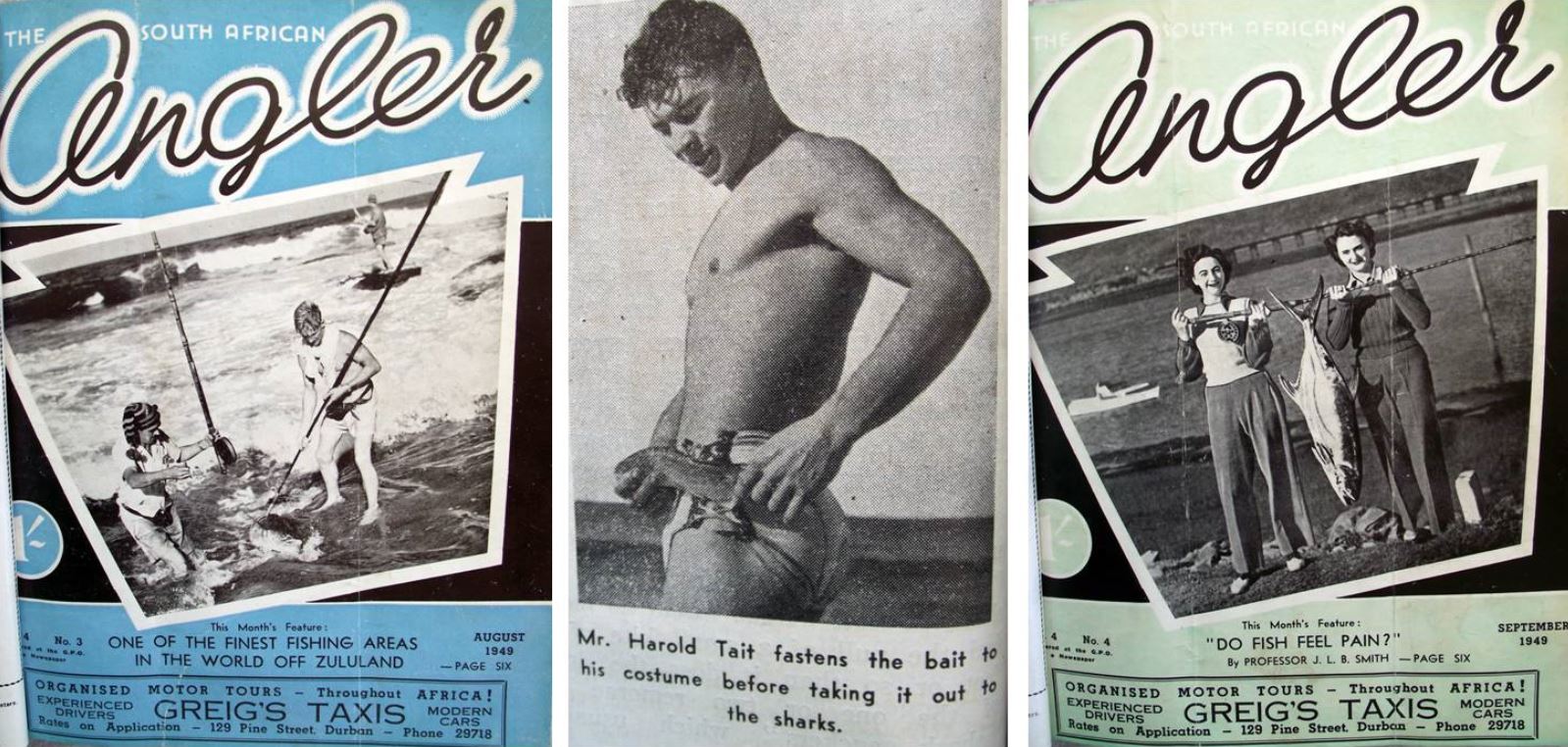Fishtory news- a glimpse into a bygone era
07 August 2016

Fishtory is gaining momentum and we’ve landed some prize catches in the last two months. With the main drive for data focusing on the pre-1980 era, we’ve uncovered some real gems. The photographs, newspapers clippings and journals will be uploaded on the website as we digitise and verify them; some have been posted already so go and have a look at our archives http://fishtory.co.za/archive/ (be sure to sort by most recent). What I want to share with you now though, are some pieces that won’t go onto the website, just some lovely bits of writing from a bygone era, some strange, and some still dishearteningly poignant 100 years later.
The oldest record that has been submitted thus far is a scrapbook of newspaper cuttings ranging from 1903 -1909, detailing the new, and seemingly successful, career in the Natal Fisheries of an infamous Fisheries Inspector Mr WH Caney. Mr Caney was employed to enforce fisheries law during this time, resulting in many headlines along the lines of ‘Illegal possession’ and ‘Breaking the fishery laws’. It seems that whomever appointed him was very pleased with his recommendation, as you can tell from this report in 1903:
“The decision of the Government to adopt my early recommendation for the appointment of a Fisheries Inspector has been followed by results that are at once striking and gratifying...in a period of ten weeks no less than 35 convictions were secured by him, the fines inflicted and paid amounting to £75 10s. The results enable one to form a conclusion as to the pitiful destruction that has been wrought in the past, and confirm what I so frequently urged, that the making of rules was a waste of time without a special officer to see them enforced.”
If only Mr Caney was around to apprehend the infamous pair of Durban-based fishermen who made headlines recently with their catch of 10 large black mussel-cracker between them. It seems we are sitting with the very same problems, 113 years later.
Something a little more light-hearted, and daring, from The South African Angler annual in 1949 is an article on “twenty year-old Mr. Harold Tait of Winkle Spruit, on Natal’s south coast” who used to swim fishermen’s shark baits out for them, beyond the breakers. “This is how he does it. The angler prepared his bait, which is usually a big fillet, whole shad or mullet. Mr Tait either fastens it to his costume or holds it in his hands, bare hooks showing. He walks calmly down to the water, plunges in and just starts swimming through a rocky surf until the angler thinks he has gone far enough”. And what did Mr Tait have to say about this? “I’m a bit of a fatalist. Either I get bitten or I don’t”. I’d love to know what Mr Tait’s fate was...
On the subject of sharks, I love the description of the great white shark in the original edition, first published in 1949, of ‘The Sea Fishes of Southern Africa’ by legendary JLB Smith. Of course Carcharodon carcharias had many names back then - Blue-Pointer, White-Pointer, Man-eater, Uptail, Tommy or the especially ominous White Death Shark – and this is what Professor Smith had to say about it: “A 12 ft. specimen can bite a man in two, a 20 ft. specimen can swallow a man whole. Some observers say this Shark prefers fish to other flesh, but eats almost anything, attacking man only by chance and only then becoming a man-eater. This sounds rather speculative and one would prefer not to test it out. This Shark will come close to a boat and snap viciously at an arm overside. An old sailor has told of an 18 ft. monster caught near the coast...which was hooked and finally shot by the captain. Dragged aboard it was cut open and found to have in its stomach the foot of a native, half a small goat, 2 pumpkins, a wicker-covered scent bottle, 2 large fishes quite fresh, a small Shark and unidentifiable oddments.” Speculation aside, JLB Smith was a deservedly well-respected pioneering fisheries scientist and we owe much of what we know today to himself and his wife Margaret. I can only imagine what accomplishments great minds such as theirs could have achieved in our age of technological advances.
We’re so grateful to those of you have submitted images or clippings to the Fishtory project to date, please spread the word and keep following our progress. We cannot complete this project without you!